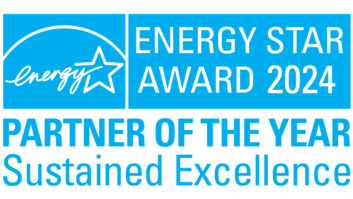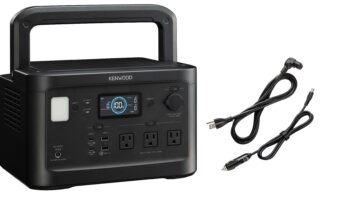ARLINGTON. VA. — The Environmental Protection Agency’s Energy Star program and its partnership with the Consumer Electronics Association (CEA) to promote energy conservation is still going strong more than two decades after it began.
From the first Energy Star-qualified computer in 1992, the Energy Star label can now be found on products in more than 70 different categories, with more than 4.5 billion sold.
And CEA is very pleased with its progress. Douglas Johnson, technology policy VP, told TWICE that Energy Star is “still an excellent example on the national, and also the international level, of cooperation between government and private industry.”
Johnson explained, “We have national and international participants in [Energy Star]. The program is flexible enough to keep up with the changes … the innovations of the products involved.”
He noted, “The number of specs that are reviewed … revised over the years are many. And the program covers just about every CE category. It still has popular appeal.”
According to the EPA, more than 1.5 million new homes and 23,000 office buildings, schools and hospitals have earned the Energy Star label. Since the Energy Star program began in 1992, American families and businesses have saved $297 billion on utility bills and prevented more than 2.1 billion metric tons of greenhouse gas emissions with help from Energy Star.
For 2012, the most recent reporting year, the EPA said Americans purchased more than 300 million products that have earned the Energy Star in 2012 across more than 65 product categories, for a cumulative total of nearly 5 billion products.
And of the cumulative number of products sold as of 2012, more than 80 percent are in the office equipment, home office equipment and home electronics categories. In 2012, there were more than 40,000 product models that carry the Energy Star label.
Energy Star products savings attributable to electronics for 2011 are also impressive. EPA statistics show that net savings for all Energy Star products during that year was $13.4 billion. Electronics were responsible for about 60 percent of that, or about $7.9 billion.
The percentage of emissions avoided attributable to electronics was about 54 percent of total Energy Star savings for 2011.
A recent development in the Energy Star program — and showing how “very comprehensive” it still is, according to Johnson — was a voluntary set-top agreement announced last December that will cut energy use for 90 million U.S. households and save consumers billions.
The new standards, developed through a nonregulatory pact between the pay-TV industry, the CE industry and energy-efficiency advocates will improve set-top box efficiency by 10 percent to 45 percent (depending upon box type) by 2017 and are expected to save more than $1 billion on consumer energy bills annually.
The program will save enough electricity each year to power 700,000 homes and avoid more than 5 million metric tons of carbon dioxide emissions each year.
To illustrate the overall impact the Energy Star program has had on the CE industry, and how the industry has responded to the program, Johnson said, “During the lifespan of Energy Star over 5 billion products have been sold that are part of the program, with 80 percent being home and office CE products.”











